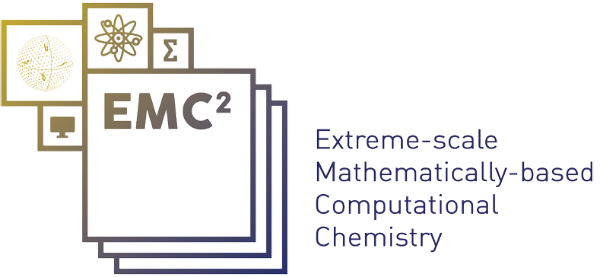Work Package 2 – Reduction of complexity:
The reduction of complexity is inherent to the applications in computational chemistry and physics because of the brute-force simulation of the most accurate models, based either on the N-body Schrödinger equation or a full DFT description of the electronic structure, is currently and for a long time beyond the reach of current computing means. Numerous approaches have been proposed with varying degrees of rigor and success.
The main objective of this Work Package is to i) mathematically assess the quality and range of applicability of various existing or new scale models and to specify the framework of application, ii) ensuring the relevance to large-scale systems in chemistry and physics and iii) the potential to use the supercomputing resources as proposed in the project.
The basis for the reduction generally follows physical and chemical intuition and uses for example the fact that:
- the phenomena of interest are often in a vert specific energy range;
- the full quantum description of the ab initio contribution is often required only in a localized region of low volume space giving rise to QM/MM approaches or implicit polarizable solvent models
- reactivity does not need to be taken into account and thus the dynamic behaviour can be modelled using classical empirical potentials.
Finally, very simplified models can be used to parameterize Monte Carlo kinetic models allowing a rough description of the long-term dynamics. A recent use of statistical learning or machine learning integrating large datasets is also proposed for which the right representation of the modeled objects must be chosen with care and using the synergetic expertise of the team involved in this project.
